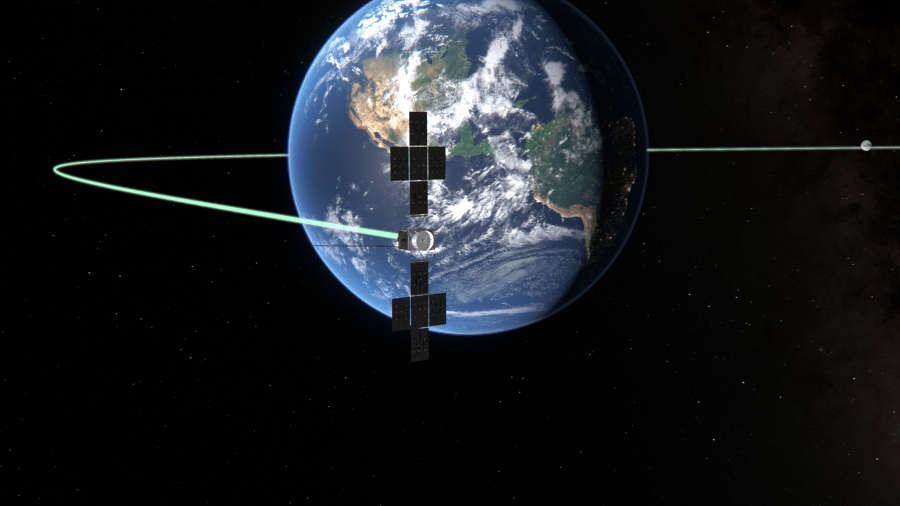SPACE (KXAN) — A spacecraft is attempting something unusual and groundbreaking this week. It will harness the gravity of the Earth and Moon to slingshot its way to the other side of the solar system.
The Jupiter Icy Moons Explorer mission (JUICE) was launched into space last year by the European Space Agency (ESA).
On August 19th the probe will use the Moon’s gravity to change direction. A day later, on August 20th, the probe will slingshot around the Earth, changing its speed and direction.
According to a report published in the scientific journal Nature, the maneuver will help the space probe conserve enough fuel to reach Jupiter’s moons in 2031.
This double slingshot trick isn’t easy. According to the report, it will “amplify any errors” that have occurred since the probe first launched. If before it was an inch off course, the maneuver could cause it to miss its final destination entirely.
The fly-by of Earth will allow the probe to pass Venus and use its gravity for an additional slingshot to reach Earth again in 2026 and 2029. After these two visits, it will finally have enough speed to complete its journey.
What is in the JUICE?

The JUICE mission is part of the ESA’s Cosmic Visions program, according to NASA. It will spend at least three years collecting data on Jupiter’s moons. During the mission, it will collect data on Ganymede, Callisto and Europa.
The mission is a partnership between NASA and ESA, with NASA providing instruments for the craft. JUICE’s goal is to help determine if we could live on any of Jupiter’s moons. If not us, maybe something else already is living there.
Ganymede and Callisto are the primary focus of this mission. Callisto will have 21 flybys, Ganymede 12, and Europa two.
Before now, only two spacecraft have orbited Jupiter: Galileo and Juno. Galileo found evidence of liquid water on the moons, while Juno learned more about Jupiter’s wild weather.
The mission launched on April 14, 2023. It will reach the Jupiter system on July 14, 2031, wrapping up with a visit to Ganymede in 2035.
Jupiter’s moons and the search for life
Scientists have long suspected that if life exists anywhere in our solar system, it would be on one of Jupiter’s moons. Besides having liquid water, even oceans, they also have some pretty cool attributes.
Europa is the fourth largest of Jupiter’s moons. It is more than 497 million miles from Earth and was discovered in 1610. It is believed to have a saltwater ocean beneath its icy shell, holding twice as much water as the Earth’s oceans.



On October 10, 2024, the Europa Clipper mission will head towards the moon. This mission will study the oceans, as well as how Jupiter’s immense radiation affects the water below.
Callisto is the most heavily cratered object in our solar system, according to NASA. The second largest moon of Jupiter, and the third largest moon in our solar system. Scientists thought the moon was dead until the Galileo spacecraft discovered that a salty ocean may be beneath the surface.
Ganymede is the largest moon in our solar system. The ocean below its crust may have more water than all the water on Earth. The ocean is believed the be ten times deeper than Earth’s ocean but is buried under a 95-mile deep crust.
